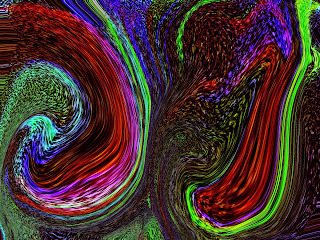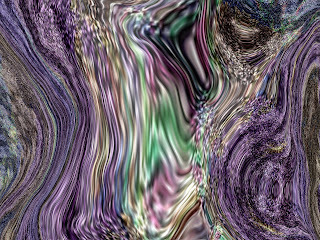Pearl Zhu's Blog, page 146
March 6, 2025
Breakthrough Innovation
By embracing divergent perspectives, organizations can foster an environment conducive to breakthrough innovations that challenge the status quo and drive progress.
 Innovation is to implement novel ideas and generate great value. Breakthrough Innovation is a radical new approach that leaves competition behind in some way. It's out-of-the-box thinking where incremental innovation is still inside-the-box thinking.
Innovation is to implement novel ideas and generate great value. Breakthrough Innovation is a radical new approach that leaves competition behind in some way. It's out-of-the-box thinking where incremental innovation is still inside-the-box thinking.
A divergent perspective in breakthrough innovation emphasizes the importance of nonconformity, creativity, and the ability to challenge existing norms and ideas. This approach is crucial for developing groundbreaking innovations that can disrupt markets and create new opportunities.
Key Aspects of Divergent Thinking in Innovation
-Nonconformity and Independence: Creative individuals often exhibit autonomy and nonconformity, which allows them to think independently and challenge established norms. This independence is essential for developing radical ideas that may initially seem unconventional but can lead to significant breakthroughs.
-Curiosity and Problem-Solving: Divergent thinkers are characterized by their curiosity and ability to identify unique problems or opportunities that others might overlook. This involves a willingness to explore novel solutions and embrace ideas that are not yet widely accepted, akin to "buying low" in the marketplace of ideas.
-Creative Destruction: The concept highlights how new innovations can disrupt existing markets and replace outdated technologies. This process is driven by entrepreneurs who introduce new products or methods, fostering economic growth and evolution.
-Disruptive Innovation: Disruptive innovations often start by appealing to a niche market with different priorities than the mainstream. These innovations can eventually transform entire industries by offering new value propositions that existing products do not address.
-Collaboration and Networks: Successful innovation often involves collaboration between diverse entities, such as universities and corporations, which can facilitate the flow of knowledge and resources. This network-based approach promotes experimentation and collective learning, essential for adapting to rapid technological changes.
Innovation involves many steps: The generation of an idea, the demonstration of its feasibility, its implementation, its commercialization, and its diffusion. Those who study innovation find it helpful to differentiate between these stages. In some cases, an incremental innovation in one area may be hailed as a breakthrough in another area. By embracing divergent perspectives, organizations can foster an environment conducive to breakthrough innovations that challenge the status quo and drive significant progress to advance humanity.
Follow us at: @Pearl_Zhu
Right to Be Free
for every mind that is open enough, for every spirit that’s free high, we’ll capture our own views, sing our own songs, we have the right to be free, write life stories of our types…
 In the shadows of silence,
In the shadows of silence, where freedom is confined,
voices mixed with noise,
spread around the darkness,
conversations turn out to be irrelevant,
make us feel exhausted...
We’ve got the right to be free,
to ponder around,
without being intruded, intrigued,
or intervened,
we shall have freedom to-
break the bind...
Every voice that was silenced,
every tear that was shed,
is the known & unknown in-
invisible consciousness,
the thoughts flow from our mind;
we’ve got the right to be free,
to think freely,
without mind chats to bothering around,
we are innocent, innovative to-
continue our journey with our own rhymes...
From the river of history,
we learn and we grow,
With courage as our compass,
we’ll let our truth show.
No more chains of misunderstanding,
no more confusion in our sight,
we’ll shatter these silo walls that divide.
overcome biases of different types;
we’ll free like the colorful aroma,
influence surroundings,
reach up the hills, to the ocean side.
So here’s to the visionaries,
the innovators of all kinds,
we’ll carry the banners,
we’ll stand up and try;
for every question we ask about,
we gain collective insight;
for every problem,
we'd like to solve,
we fix real issues,
unleash collective potential;
for every mind that is open enough,
for every spirit that’s free high,
we’ll capture our own views,
sing our own songs,
we have the right to be free,
write life stories of our kinds…
Follow us at: @Pearl_Zhu
Above & Underneath
With the sky as our canvas, and the earth as our landscapes, in the harmony of both, our beings are surrounded by universal love...
 In the quiet time,
In the quiet time, when the stars shine bright,
look up to the universe,
feeling so alive,
we are on the great journey to -
be wise;
convey fresh insight...
There’s a world up high,
where the vision takes time to realize,
But down below the sky,
there’re natural phenomenon,
that already thrive...
Above and underneath,
where the shadows meet the light,
in the tempo of moving forward,
we got lost and find ourselves,
through the ardent journey,
being called life;
with every whisper of the thoughts,
every wave of the ocean tide;
we’re connected by
the threads of the universe's hub...
In the seasonal changes,
through the paradigm shift,
our stories unfold,
unleash the potential of creative life;
in the depths of things uncovered,
where the root causes intertwine;
above and underneath,
there are conversations in the silence,
there are truths and myths surrounding us....
So let’s reach above for the stars,
and dig deep in the ground,
In the above, envision our roadmap,
and underneath watch our step wise,
that’s where wisdom is found.
Above the horizon, we’ll soar,
and below, we’ll stay grounded.
with the sky as our canvas,
and the earth as our landscapes,
in the harmony of underneath and above,
our breeds are surrounded by universal love...
Follow us at: @Pearl_Zhu
Problem -Solving
So, transforming knowledge into fresh insight requires a combination of critical thinking, problem-solving, and philosophical inquiry, allowing for the development of new perspectives and solutions.
 The process of defining, clarifying, and refining knowledge into fresh insight involves several cognitive and philosophical approaches. Critical thinking plays a central role in this process.
The process of defining, clarifying, and refining knowledge into fresh insight involves several cognitive and philosophical approaches. Critical thinking plays a central role in this process.
It involves breaking down problems into their constituent parts, recognizing biases, collecting and assessing evidence, and forming reasoned assessments to propose solutions or gain a more accurate understanding of a topic.
Reassess assumptions: Critical thinking is not just a set of skills but also a disposition towards reflective inquiry, characterized by curiosity, open-mindedness, and persistence. It requires the thinker to constantly reassess assumptions and potential explanations to arrive at sound judgments and insights.
Refine Knowledge: In addition to critical thinking, problem-solving involves both divergent thinking, which generates a variety of potential solutions, and convergent thinking, which narrows down these possibilities to find the best answer. Insight often emerges from this process, providing a sudden understanding or new way of conceptualizing a problem.
Rational argument: Philosophically, the debate between rationalism and empiricism highlights different sources of knowledge—reason and experience, respectively. Rationalists argue for innate ideas, while empiricists emphasize experience as the source of all ideas, which are then refined into knowledge through reflection and analysis.
Knowledge is power. So, transforming knowledge into fresh insight requires a combination of critical thinking, structural problem-solving, and philosophical inquiry, allowing for the development of new perspectives and solutions.
Follow us at: @Pearl_Zhu
Unseen Frontier in Global Understanding
The unseen frontier in global understanding presents opportunities for growth, connection, and collaboration.
 Nowadays global world is both big and small, with cross-boundary information flow and rapid changes. The idea of the "unseen frontier in global understanding" refers to the untapped potential for deeper comprehension and connection among diverse cultures, societies, and ideas. Here are some key aspects to consider:
Nowadays global world is both big and small, with cross-boundary information flow and rapid changes. The idea of the "unseen frontier in global understanding" refers to the untapped potential for deeper comprehension and connection among diverse cultures, societies, and ideas. Here are some key aspects to consider:Cultural Exchange and Empathy: Increased globalization has made cultural exchange more accessible, yet many nuances remain unacknowledged. Encouraging empathy through storytelling, art, and dialogue can bridge gaps and foster understanding.
Digital Communication: The rise of digital platforms allows for unprecedented interaction across borders. However, barriers such as language, misinformation, and digital divides can hinder genuine understanding.
Interdisciplinary Approaches: Combining insights from various fields—such as sociology, psychology, and technology—can unveil new perspectives on global issues. Interdisciplinary collaboration can help tackle complex problems more effectively.
Historical Contexts: Many misunderstandings stem from historical grievances and narratives. Acknowledging and addressing historical contexts can pave the way for reconciliation and mutual respect.
Local Voices and Narratives: Elevating local perspectives in global discussions can provide richer insights. Engaging with cultural movements and indigenous knowledge can enhance global understanding and foster inclusivity.
Education and Awareness: Promoting global citizenship education can cultivate awareness of diverse cultures and histories. Encouraging critical thinking about global issues can empower individuals to engage more thoughtfully.
Environmental and Social Challenges: Global issues like climate change and inequality require collective understanding and action. Collaborative efforts that transcend borders can lead to innovative solutions and shared responsibility.
The unseen frontier in global understanding presents opportunities for growth, connection, and collaboration. By embracing diversity and fostering open dialogue, societies can work together to navigate the complexities of an interconnected world.
Follow us at: @Pearl_Zhu
Unleashing Potential
These metaphors can be useful in conveying the dynamic and evolving nature of talent development.
 Human development is a complex interplay of genetic, biological, and cultural factors that shape cognitive, emotional, intellectual, and social capabilities. An analogous understanding of talent growth can be drawn from the process of gardening or other natural phenomenon.
Human development is a complex interplay of genetic, biological, and cultural factors that shape cognitive, emotional, intellectual, and social capabilities. An analogous understanding of talent growth can be drawn from the process of gardening or other natural phenomenon.Talent is like a garden: With the right care—sunshine, water, and nurturing—it blossoms into vibrant flowers, each representing a unique skill or ability. Gardening involves understanding seasonal changes and the myriad of small events that contribute to the overall beauty of a garden. Similarly, talent growth involves recognizing and responding to various developmental stages and challenges. Both processes require patience, attention, and a willingness to learn from nature or experience. Moreover, gardening is accessible to all ages and levels of ambition, much like talent development, which can begin with simple tasks and grow into complex skills. Both pursuits offer a sense of achievement and personal growth, whether it is the pride in a homegrown vegetable or the mastery of a new talent. Thus, the multifaceted and forgiving nature of gardening serves as a fitting analogy for the nurturing and growth of talent.
Growing Tree: Talent is a tree that starts as a small seed. With time, nourishment, and support, it grows strong and tall, branching out into various directions, symbolizing diverse skills and achievements.
Mosaic of Skills: Talent is a mosaic, where each piece represents a different skill or experience. As more pieces are added, a beautiful and complex picture emerges, showcasing the individual's unique abilities.
Unfolding Flower: Talent is like a flower bud. As it unfolds layer by layer, it reveals its beauty and complexity, representing the gradual development of skills and potential.
Clay Sculpture: Talent is a lump of clay in the hands of a sculptor. With each touch and refinement, the raw material transforms into a masterpiece, illustrating the process of honing skills through practice and feedback.
Journey on a Path: Talent is a journey along a winding path. Each step represents a lesson learned or a challenge overcome, leading to greater heights and deeper understanding.
Musical Composition: Talent is a symphony in progress. Each note and instrument represents different skills and experiences, and as they come together, they create a harmonious and powerful piece of music.
Hill Hike: Talent is a mountain to climb. With each upward step, skills are developed, and the view becomes clearer, symbolizing growth and the achievement of new heights.
River of Learning: Talent is a flowing river. As it navigates obstacles and twists, it gathers strength and clarity, representing how experiences shape and refine skills over time.
Just as gardening requires a certain level of civilization and effort to cultivate an attractive environment, talent growth necessitates nurturing and development over time. In both cases, there is an inherent satisfaction derived from involvement in the process—whether it is tending to plants or honing a skill. These metaphors can be useful in conveying the dynamic and evolving nature of talent development. This process goes beyond mere training; it includes upskilling, mentorship, cross-training, and fostering a growth mindset among employees. By investing in talent development, organizations can cultivate a workforce that is not only skilled but also engaged and motivated.
Follow us at: @Pearl_Zhu
March 5, 2025
Innovative Idealization
By carefully planning and executing an innovation brainstorming session, teams can effectively harness collective creativity to generate innovative solutions and drive progress.
 Being innovative is a state of mind. Brainstorming activates creativity which can be transformed into innovation: The key to brainstorming is not to evaluate your ideas. Just let the ideas flow. Innovative idealization is a creative process that involves generating ideas and solutions through collaborative discussion.
Being innovative is a state of mind. Brainstorming activates creativity which can be transformed into innovation: The key to brainstorming is not to evaluate your ideas. Just let the ideas flow. Innovative idealization is a creative process that involves generating ideas and solutions through collaborative discussion.
Here are some key elements and techniques to consider when conducting an effective innovative idealization session:
Preparation
-Define the Objective: Clearly outline the purpose of the idealization session. What problem are you trying to solve, or what area are you seeking to innovate in?
-Gather a Diverse Team: Include participants from different backgrounds, departments, and expertise to bring a variety of perspectives and ideas.
-Set an Innovative Environment: Choose a comfortable and open space that encourages creativity. Ensure that necessary materials (whiteboards, markers, sticky notes) are available.
-Establish Ground Rules: Encourage open-mindedness, respect for all ideas, and a judgment-free atmosphere. Emphasize that quantity of ideas is more important than quality at this stage.
Techniques
-Tracking Ideas: Participants write down their ideas individually before sharing them with the group. This can help introverted participants contribute more effectively.
-Mind Mapping: Create a visual representation of ideas by connecting related concepts. This technique helps in identifying relationships between different ideas and can spark further creativity.
SCAMPER Method: Use this acronym to explore different aspects of a problem or product:
-Substitute
-Combine
-Adapt
-Modify
-Put to another use
-Eliminate
-Reverse
-Role Storming: Participants adopt different personas or roles to generate ideas from various perspectives, which can lead to unconventional solutions.
-Rapid Ideation: Set a time limit and encourage participants to generate as many ideas as possible in that timeframe. This can help bypass self-censorship and spark creativity.
Post-Brainstorming: Organize and Evaluate Ideas: Categorize and prioritize ideas based on feasibility, impact, and alignment with objectives.
Develop Actionable Plans: Select the most promising ideas and create a plan for further development, testing, or implementation.
Follow-Up: Schedule follow-up meetings to review progress, address challenges, and refine ideas as needed.
Being innovative is a state of mind. By carefully planning and executing an innovation brainstorming session, teams can effectively harness collective creativity to generate innovative solutions and drive progress.
Follow us at: @Pearl_Zhu
Personalization for Growth
The art and science of personalization is to deeply understand our beings via empathy and delight them with innovative solutions.
 In a broader sense, personalization in potential development could involve customizing learning, career development, or personal growth strategies to fit an individual's unique characteristics, needs, and goals. This personalized approach can enhance the effectiveness of development efforts by aligning them more closely with the individual's strengths and areas for improvement.
In a broader sense, personalization in potential development could involve customizing learning, career development, or personal growth strategies to fit an individual's unique characteristics, needs, and goals. This personalized approach can enhance the effectiveness of development efforts by aligning them more closely with the individual's strengths and areas for improvement. Personalization in talent development involves tailoring training and development programs to meet the unique needs and strengths of individual employees. This approach can enhance the effectiveness of talent development efforts by aligning them more closely with each employee's specific skills, abilities, and career goals.
Key elements of personalized talent development include:
-Training and Development: Providing high levels of training and development is crucial. This ensures that employees have the necessary skills and abilities to perform their roles effectively. Personalized training programs can address individual skill gaps and help employees reach their full potential.
-Empowerment and Participation: Empowering employees by decentralizing decision-making authority and encouraging participation can enhance their problem-solving skills and motivation. This approach allows employees to take ownership of their development and contribute more effectively to organizational goals.
-Flexible Position Designs: Implementing flexible career designs and self-managed work teams can accommodate individual preferences and strengths, leading to a more committed and innovative workforce. This flexibility can help employees apply their unique talents in ways that benefit both their personal growth and the organization.
-Performance-Based Rewards: Offering performance-based rewards can motivate employees to engage more deeply with their development. Personalized incentives aligned with individual goals can drive higher levels of effort and commitment.
The art and science of personalization is to deeply understand our beings via empathy and delight them with innovative solutions. Personalization in talent development focuses on creating a supportive environment where employees can develop their skills and abilities, leading to improved performance and organizational success.
Follow us at: @Pearl_Zhu
Overseers
The overseers of strategy management play a critical role in ensuring that an organization remains focused on its strategic objectives and adapts to changes in its environment.
 The business ecosystem become more complex and dynamic than ever. In the context of strategic management, the "overseers" are typically the senior leaders and managers within an organization who are responsible for guiding and implementing the strategic planning process.
The business ecosystem become more complex and dynamic than ever. In the context of strategic management, the "overseers" are typically the senior leaders and managers within an organization who are responsible for guiding and implementing the strategic planning process.
These individuals ensure that the organization has a clear vision, mission, and goals, and they coordinate efforts to achieve these objectives.
Key roles of these overseers include:
-Leadership and Vision: Leaders are responsible for setting the strategic direction of the organization. They define the purpose, establish realistic goals, and communicate these to the organization's constituents. This involves developing a sense of ownership of the strategic plan and ensuring that resources are focused on key priorities.
-Coordination and Implementation: Effective strategic management requires a structured approach to coordinating and managing the implementation process. Leaders must ensure that the organization has the necessary structure and culture to support strategic initiatives and facilitate continuous change.
-Participation and Engagement: Engaging organizational members in the planning process is crucial. Participation helps direct the energy of participants and fosters a supportive environment for implementing strategic changes. This involvement can enhance commitment to the organization's goals and improve overall effectiveness.
In the "VUCA" reality, business management has become more complex than ever. So the overseers of strategy management play a critical role in ensuring that an organization remains focused on its strategic objectives and adapts to changes in its environment.
Follow us at: @Pearl_Zhu
Understanding
Fulgent understanding and creative wisdom enable individuals to navigate challenges with both insight and innovation, leading to more effective and sustainable outcomes.
 True understanding enchants the world. The term of Fulgent Understanding suggests a bright, clear, and insightful comprehension of complex ideas or situations. It involves the ability to see through complexity and grasp the essence of a subject with clarity and brilliance.
True understanding enchants the world. The term of Fulgent Understanding suggests a bright, clear, and insightful comprehension of complex ideas or situations. It involves the ability to see through complexity and grasp the essence of a subject with clarity and brilliance. Pattern Recognition: In practice, fulgent understanding allows individuals to make sense of intricate problems and identify underlying patterns or truths. The concepts of "fulgent understanding" and "creative wisdom" can be seen as complementary aspects of intellectual and creative processes.
Creative Wisdom: Creative wisdom refers to the ability to apply knowledge and experience in innovative and effective ways. It combines creativity with practical wisdom, enabling individuals to devise novel solutions to problems while considering the broader implications and ethical dimensions of their actions.
A sudden insight of fresh ideas: A creative mind has such an “AHA” moment, just like the very moment when the lightbulb switch is on - the transcendence from darkness to brightness. It is not the light, but the process of "clicking or switching," giving rise to "glowing." It triggers the ignition of the inflammable material leading to a series of effects.
Together, these qualities can enhance decision-making and problem-solving in various contexts, from personal development to organizational leadership. Fulgent understanding and creative wisdom enable individuals to navigate challenges with both insight and innovation, leading to more effective and sustainable outcomes.
Follow us at: @Pearl_Zhu



